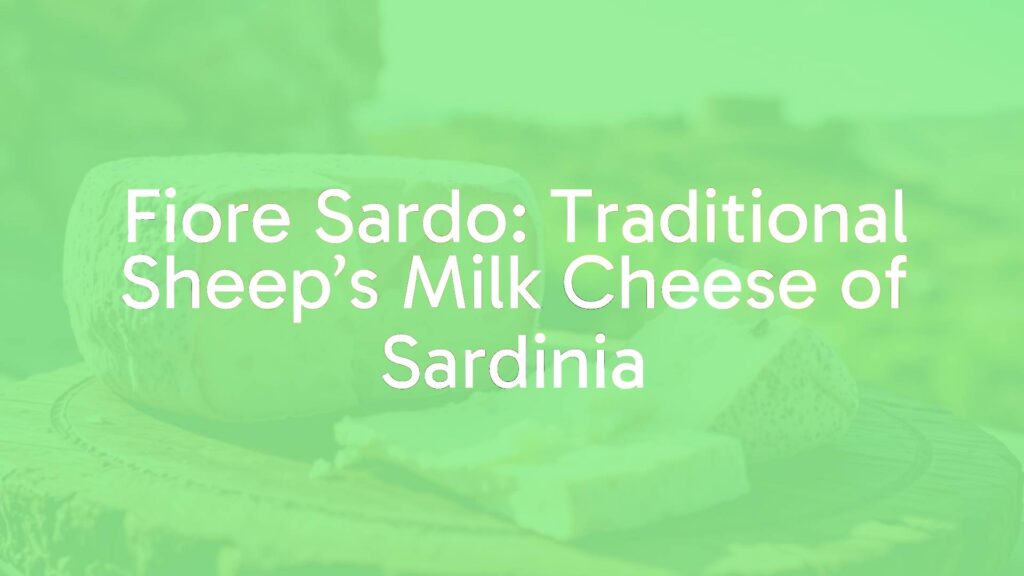Introduction to Fiore Sardo
Fiore Sardo is a celebrated Italian cheese hailing from the island of Sardinia. This flavorful sheep’s milk cheese stands out for its rustic, nutty character and distinctive smoky undertones. Unlike more widely known hard cheeses from mainland Italy, Fiore Sardo represents a unique blend of Sardinian tradition and pastoral heritage, deeply connected to the island’s landscape and culture.
Historical Background
The legacy of Fiore Sardo stretches back hundreds of years. Shepherds in Sardinia have made this cheese since ancient times, using traditional methods passed down through generations. Its name, meaning “Sardinian flower,” refers in part to the wooden molds once decorated with floral designs, traditionally used in its shaping process. Fiore Sardo’s enduring popularity is a testament to the Sardinian people’s reverence for their agricultural roots and culinary identity.
Distinguishing Characteristics
Fiore Sardo is crafted exclusively from raw sheep’s milk, typically sourced from the indigenous Sardinian breed. The cheese is hard and compact, featuring a natural, dark-golden rind that forms during aging. A defining feature is its gentle smoky aroma and flavor, imparted as the wheels are briefly smoked over wood fires early in the maturation process. The interior paste is pale yellow, dense, and slightly crumbly, with flavors ranging from delicately sweet in younger cheeses to assertively savory and piquant in those matured for longer periods.
Traditional Production Methods
Production of Fiore Sardo is governed by strict guidelines, particularly for those cheeses bearing the DOP (Denominazione di Origine Protetta) status. Cheesemakers curdle raw sheep’s milk using natural lamb or kid rennet, then place the curds in characteristic molds. After pressing and shaping, the cheeses are traditionally salted by hand and subjected to light smoking. Aging occurs in cool cellars for a minimum of three months, with longer aging producing more robust flavors and a firmer texture. Artisanal dairies in central Sardinia remain the principal producers of this cheese.
Cultural and Culinary Significance
Fiore Sardo is more than just a cheese; it is a symbol of Sardinia’s pastoral culture. It features prominently in local festivals and gatherings and is deeply woven into the social and gastronomic fabric of the region. Sardinians have treasured this cheese for centuries, regarding it as an expression of their rugged island terroir and craftsmanship.
Enjoying Fiore Sardo: Pairings and Serving Suggestions
Fiore Sardo’s robust flavor makes it an excellent cheese for savoring on its own or as part of antipasto platters. A classic way to enjoy it is simply sliced with crusty rustic bread and a drizzle of local honey, which complements its sharpness. It also pairs remarkably well with figs, walnuts, and cured meats. The cheese’s salty, savory notes make it a great companion to Sardinian Cannonau wine or other full-bodied reds. In regional cuisine, it is often grated over hearty pasta dishes, vegetable stews, or soups, adding a distinct depth and complexity.
Notable Variations
Fiore Sardo DOP is the gold standard, but throughout Sardinia, artisanal versions exist that may vary in smokiness, saltiness, and aging. Some small producers experiment with longer aging or distinct wood types for smoking, lending their cheeses unique flavors. Regardless of the version, all Fiore Sardo cheeses are united by their use of raw local milk and adherence to time-honored methods.
Conclusion
With its robust taste and proud traditions, Fiore Sardo is an enduring representation of Sardinian cheesemaking excellence. Whether enjoyed at a festive table in Sardinia or savored abroad, this remarkable cheese invites discovery and appreciation of Italy’s rich regional diversity.

